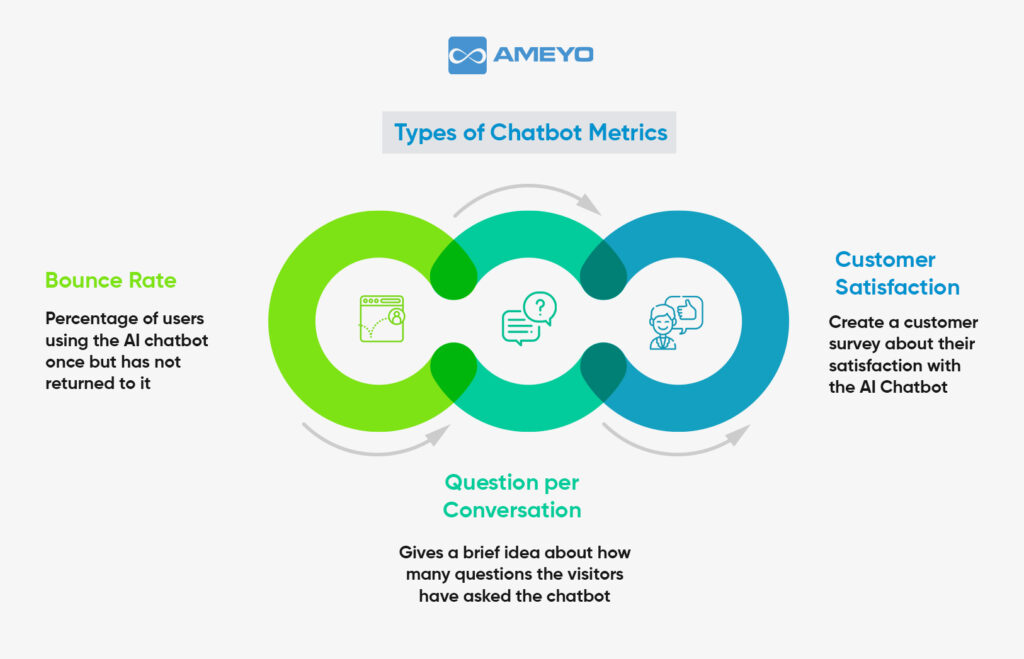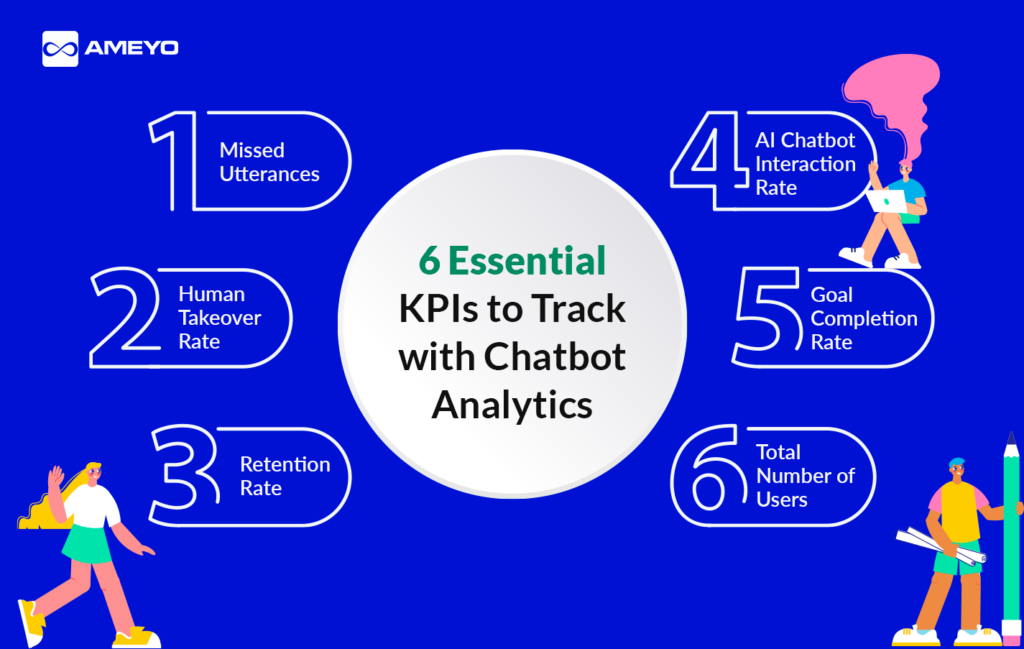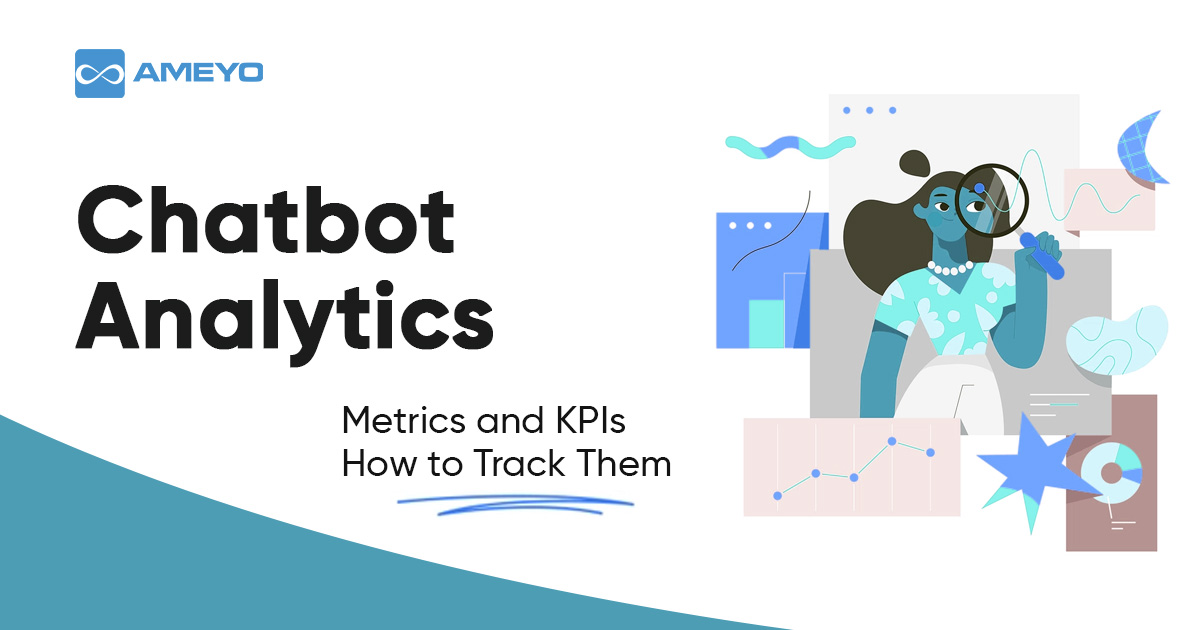In this internet era, having great products and services is not enough for your business to blow up. If you want to gain a competitive edge, it is essential to understand clients’ wants and assist them in any trouble. But with growing online businesses, it is a substantial financial burden to hire employees to help anyone who comes to your website. That’s why most companies use a chatbot to assist probable buyers.
A chatbot is a computer program it simulates and processes human conversation; in easy words, it allows customers to communicate with digital services like they are interacting with humans. Chatbots work as a digital assistant that AI drives. Even after a business’s bot goes live, their work as a chatbot developer does not finish. After deploying a chatbot, companies need to track how customers use it. Chatbot analytics is a process where businesses analyze old historical bot conversations to gain knowledge about the performance of chatbots.
Around 67% of global customers had interaction with a chatbot at least once in the past year
– Invesp
Adding an AI-powered chatbot to your company’s webpage can help in improving customer service. Adding an AI chatbot to your website increases your online availability and better know your customer base. Using an AI chatbot doesn’t always guarantee a better customer experience. As a chatbot user, you should know about a few KPIs or Key Performance Indicators to evaluate your chatbot effectiveness.
Types of Chatbot Metrics
AI chatbot adds value to your company, but only conversational AI is insufficient. To measure your success to need to know how to track chatbot analytics. To find out whether your AI chatbot is working or not, you can use some chatbot metrics to evaluate the chatbot’s effectiveness.

1. Bounce Rate
The bounce rate shows the percentage of users using the AI chatbot once but has not returned to it. As a business owner, your target would be to maintain a lower bounce rate. The higher bounce rate indicates that your chatbot does not provide the web page visitors with sufficient assistance.
2. Question per Conversation
By the name, you can guess that this metric gives you a brief idea about how many questions the visitors have as your chatbot to get the information they want. You can develop a more specific AI chatbot to answer users’ questions by tracking this metric. But at the same time, every user is unique and has a unique set of questions. So the result depends on the goals of your user.
3. Customer Satisfaction
You can create a survey to ask your users about their satisfaction with the AI chatbot. IN the survey, you can add questions asking if the chatbot was helpful or not; you can also add different satisfaction levels. Based on the answers, you can direct your bot.
6 Essential KPIs to Track Through your Chatbot Analytics
Focusing on your KPIs correctly can enhance your chat performance, but tracking all the options can overwhelm you. You need to understand what to measure to improve your live chat efficiency. So here is a list of the six most important Key Performance Indicators that you should measure.

1. Missed Utterances
The bot cannot always understand what the user is saying, which counts as a missed or failed utterance. In such cases, the AI chatbot either starts over the conversation or will not answer. Both of them can be frustrating for the user.
By reviewing failed utterances, you can identify the issue and resolve it in the future. Although it is not possible to account for every user utterance, your AI chatbot should have in place a fallback intent. The fallback plan can be a text saying, “sorry, I do not understand, would you live to speak to our live customer service agent.
2. Human Takeover Rate
This specific KPI tracks how many users ask to talk to a human. The user is asking to speak in a live chat because the AI chatbot is not helpful enough and the customer is frustrated, or the bot cannot answer the specific questions. If this happens more often, you might want to let the AI chatbot answer the basic questions and connect the user with a live rep if they need more assistance.
3. Retention Rate
It is called retention rate if a user interacts with your AI chatbot frequently over a specific period. Every company wants its retention rate to be higher than its competitors. The retention rate gives you a fair idea about how tolerable conversational AI is to the users.
4. AI Chatbot Interaction Rate
The main reason to add an AI chatbot to your website is to improve the user’s experience and increase the interaction rate with the website visitor. AI chatbot interaction rate measures the average number of text exchanges between the user and the conversational AI on each conversation. The higher interaction rate suggests that your AI chatbot is engaging.
5. Goal Completion Rate (GCR)
GCR or Goal Completion Rate is used to measure the successful engagement rate of your AI chatbot within a specific amount of time. GCR chatbot analytics gives you a proper estimate of how often your conversational AI has provided the user with adequate information about the products and services. With the help of GCR, you can get an insight into the trends of clients’ preferences.
6. Total Number of Users
As the name suggests, the total number of users means how many people are using your AI chatbot at a specific time. If you launched your AI chatbot to assist your website users, this chatbot helps you decide whether or not launching the chatbot was worth it. If you track the total number of users at the beginning, you can also see the evolution of your AI chatbot.
If you see any significant improvement in your user base, you can invest more conversational AI. Also can track how many users are new or returning. If the new user number is high, but the returning user number is low, the AI chatbot is not adding any value to your business.
Conclusion
For any new business, an AI chatbot can be very beneficial. It can enhance the user’s experience, but it is essential to measure the chatbot with metrics and KPIs to analyze its importance. And also whether the AI chatbot needs any modification or not. According to various surveys, AI-generated chatbots are the new norms; to keep up with the market, you need a better quality chatbot that accurately understands your client’s needs.

